
Aldona Saimininkas
Seventy



Seventy

As one of the nation’s oldest historical societies, nearing 200 years old, the Connecticut Museum of Culture and History’s collection is particularly rich in American Revolutionary War material. One of the highlights of the collection is a rare surviving example of a military uniform coat worn by an officer in a Loyalist (Tory) regiment. Fewer than ten “red coats” are known to be in collections in the United States and Canada.
This coat was worn by Monson Hayt (d. 1805), a native of Norwalk, CT. From 1777 to 1783, Hayt served as a lieutenant in the Prince of Wales’s British American Regiment, which was organized in Middletown, CT, in the summer of 1776.
This fall, the Connecticut Museum will start work on the American Revolution Papers Digitization Project. Through this project, tens of thousands of pages will be digitized and made available to researchers through the Connecticut Digital Archive. Having access to the digitized pages will allow staff and scholars to mine the archive to uncover previously unknown stories and make connections between local events and people and national stories. This project was made possible by a $1 million federal grant through the National Historical Publications and Records Commission and is expected to be completed in 2026.
Officer’s Coat, 1777-1783, Connecticut Museum collection, Gift of Henry L. Mills, 1896.9.1.
2 COLLECTION HIGHLIGHT: AMERICAN REVOLUTION “RED COAT”
A rare surviving example of a military uniform that is part of the Connecticut Museum's collection.
4 UPCOMING EVENTS
Join us for these exciting upcoming programs.
8 PASSAGES: CONNECTICUT MUSEUM ACROSS THE STATE
Beyond our walls, the Connecticut Museum reaches all corners of the state.
10 SUPPORT CULTURE AND HISTORY IN CONNECTICUT
Make an annual gift or create a lasting legacy.
12 SOUTHERN NEW ENGLAND APPRENTICESHIP PROGRAM'S 25TH YEAR
Profile on Artist Aldona Saimininkas.
16 ON VIEW: CONNECTICUT’S BOOKSHELF
Exploring 300 years of print culture in the state.
18 NEW NAME, NEW VISUAL IDENTITY
Connecticut Historical Society has rebranded to the Connecticut Museum.
Saturday, 9:00am - 5:00pm
Sunday, 12:00 - 5:00pm
The Connecticut Museum offers free admission on the first weekend of the month. It’s an opportunity to explore all that the Museum has to offer from exhibitions to programs. Start with the permanent exhibition, Making Connecticut, a colorful, interactive show featuring more than 500 historic objects, images, and documents and highlights the stories of the people of Connecticut, from the 1500s through today. Don’t miss the rotating exhibitions: Pleibol: In the Barrios and the Big Leagues, that celebrates the Latina/os whose love of baseball and incredible talent transformed American culture; and Connecticut’s Bookshelf, that explores the state’s print culture from the 1700s to today–and asks you to decide, what belongs on the shelf? Be sure to bring the kids to take part in a free family program each Saturday from 11:00am - 2:00pm that is designed for children ranging between 3 - 12 years old and often relates directly to current exhibitions. This November’s family days will explore the world of Richard Scarry’s “Busy Town.”
First Free Weekends are sponsored by Berkshire Bank.
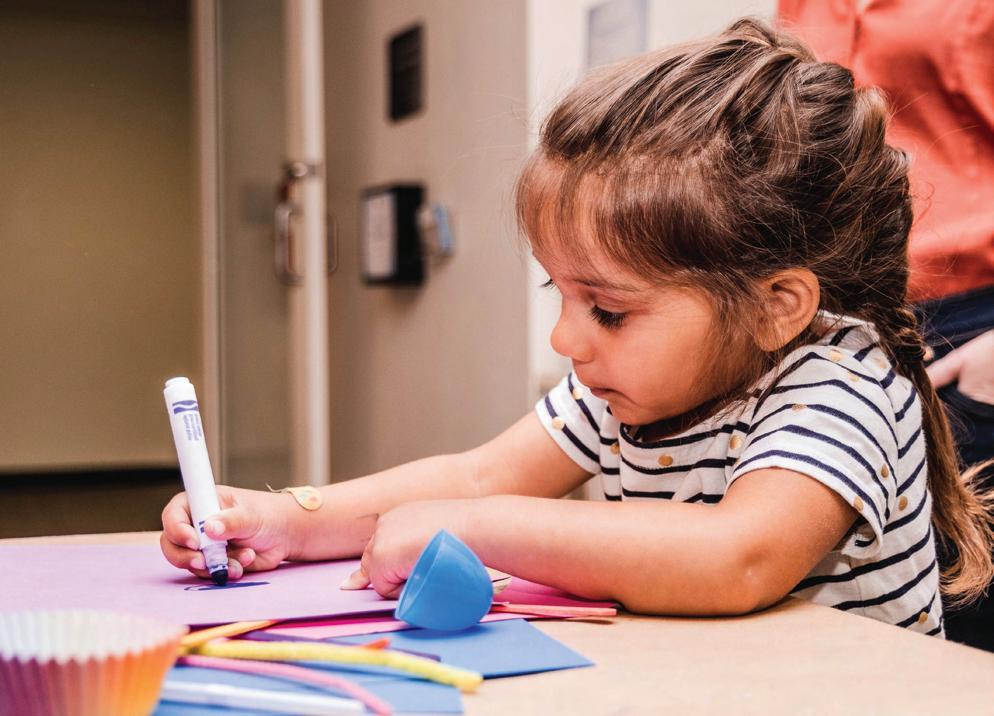
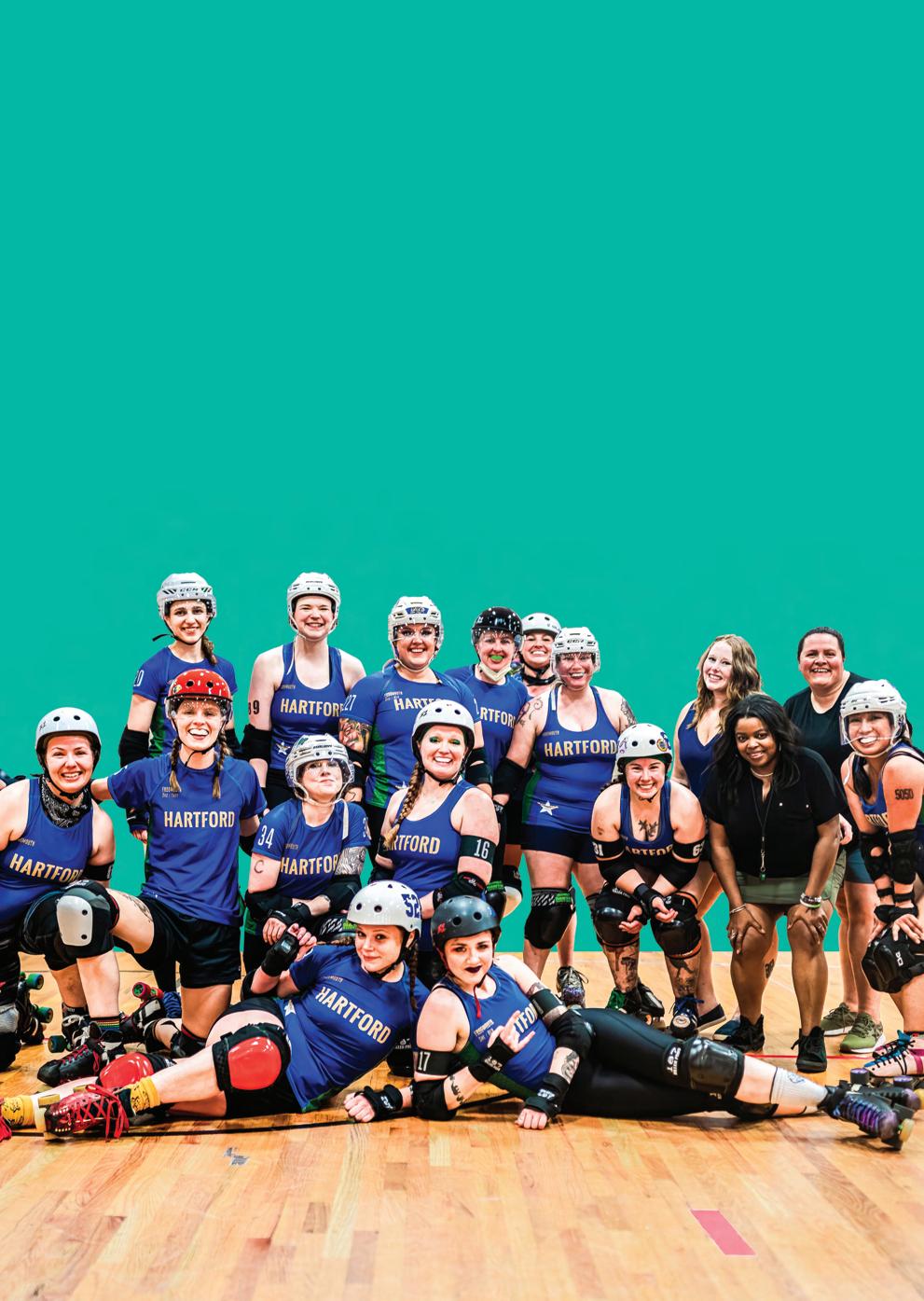
Sunday, December 3, 2:00 - 3:30pm
Connecticut is home to many sports that connect communities in play–and in competition. Join us to celebrate our newest exhibition, We’re Game! Sports & Community. Many sports were brought to Connecticut by newcomers who settled in the state, such as cricket, curling, and handball. In the 1800s to 1920s the popular sport of roller polo became referred to or was referred to as “fast and furious.” We’re Game! highlights these and many other sports that are open to people of all ages and abilities, including double dutch, adaptive (or para) sports, and lawn bowling. Although many of these sports may be less familiar to some, the Connecticut Museum will dive in from A to Z to showcase the stories and show the diversity of athletic traditions, abilities, and creativity in the state.
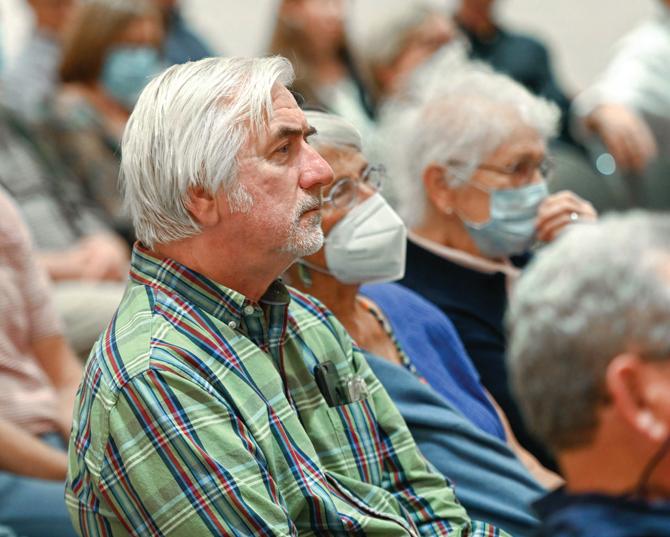
Sunday, November 5, 2:00 - 4:00pm
Veterans are invited to stand with the community and speak for up to ten minutes about what it was like to serve their country. Non-veterans are encouraged to attend and listen. This event is non-political, and all perspectives are valued in the dialogue. Attendees will listen and learn about what it was like to serve in the wars that this country has chosen to engage in.
Vets Town Halls were originated by Sebastian Junger, bestselling author of War, and Tribe, who covered the war in Afghanistan for more than a decade in remote and often dangerous outposts. War stemmed from his field reporting for Vanity Fair, which also served as the foundation for the feature film, Restrepo. Through these Vets Town Halls, Yunger’s project aims to increase communication and understanding between veterans and civilians in their communities.
The Inspire Center is a makerspace supported by the Gawlicki Family Foundation. Veterans and community members listen as veterans reflect on their experiences.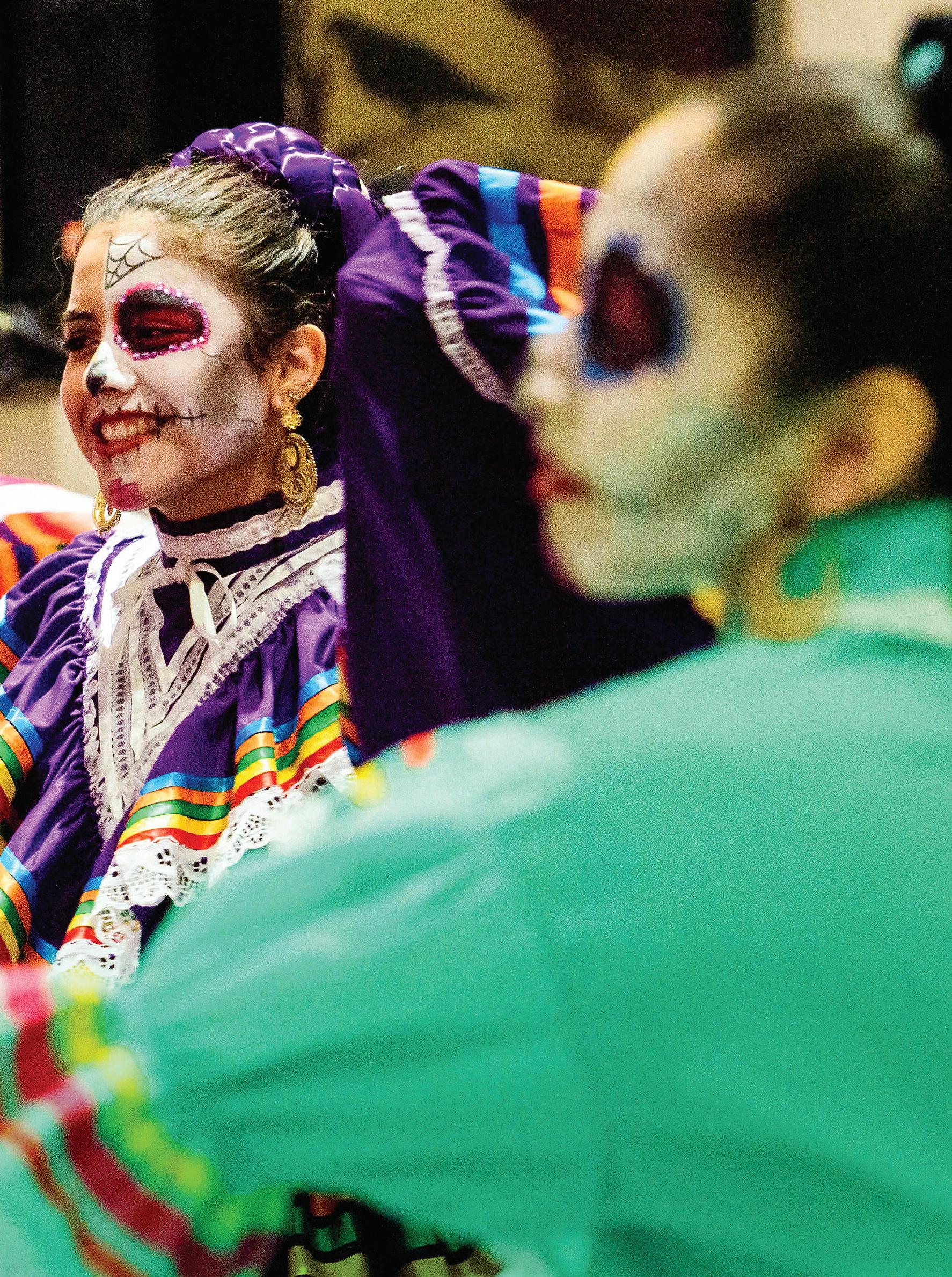
Saturday, October 28
10:00am - 5:00pm | FREE
Día de Muertos (Day of the Dead) is a joyful traditional celebration from Mexico, where departed family members are welcomed in celebration of life and joy, and where it is customary to poke fun at death. Experience the sights and sounds of Día de Muertos, with all-ages arts activities, mariachi music, and Mexican folk dance. This annual community celebration is presented in partnership with the Spanish Community of Wallingford and will feature indoor and outdoor activities and presentations, food trucks, and ofrendas created by community members.
Dia de Muertos Community Celebration is sponsored by National Endowment for the Arts, the CT Humanities, the George A. & Grace L. Long Foundation, N.A., Trustee, the Department of Economic Development, and the Cornelia T. Bailey Foundation.
Día de Muertos celebration in 2022.
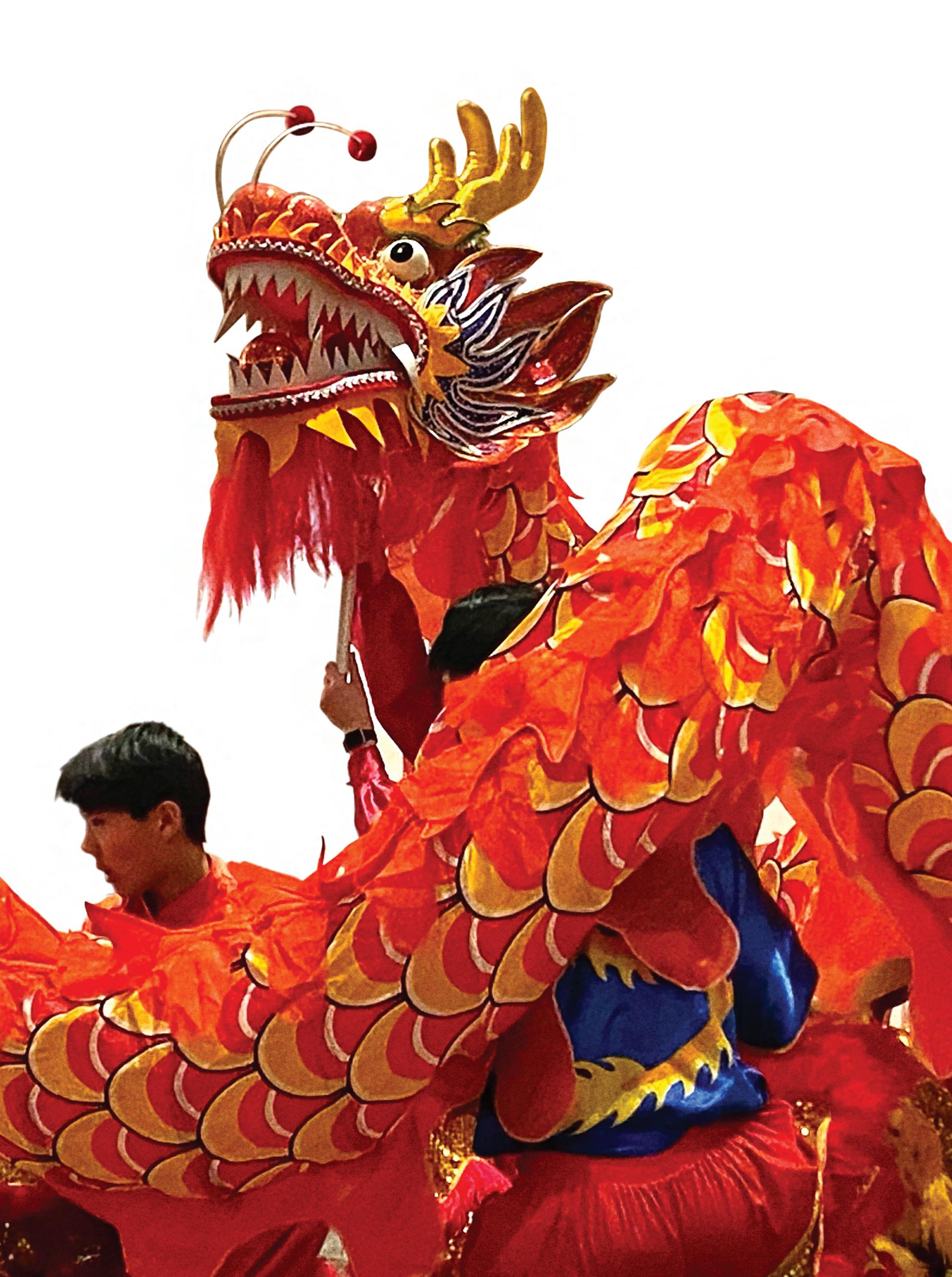
Lunar New Year is the first new moon of a lunar calendar and is celebrated by cultures across the globe. Celebrate the year of the dragon with the Connecticut Museum and our community partners! Learn about the many ways that Lunar New Year is celebrated across different cultures. This free, family event will feature crafts, musical and dance performances, food, and more.
Students from Ju Long Wushu Chinese Martial Arts Training Center performing at Lunar New Year celebration in 2023.
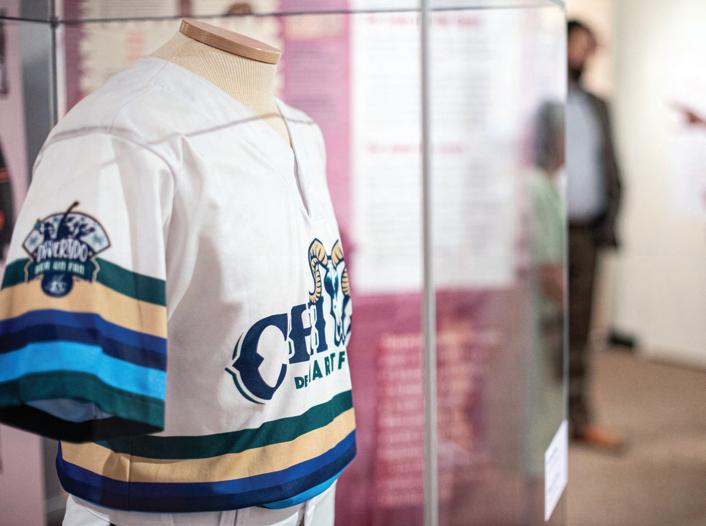
Exhibition on view through Sunday, November 5
Baseball is a national pastime. But it’s also an American export, one with a tradition that’s constantly evolving. ¡Pleibol! shares the experiences of Latinas and Latinos whose love for the game and incredible talent have changed baseball and transformed American culture forever.
Throughout the last century, Latinas and Latinos have used baseball to chase their dreams, challenge prejudice, and build communities.
Whether in the barrios or the big leagues, in rural backyards or barnstorming travel teams, they left a mark on how we see, hear, and play the game.
Organized by the Smithsonian Institution Traveling Exhibition Service in collaboration with the National Museum of American History.
This exhibition received generous support from the Cordoba Corporation and Linda Alvarado, and federal support from the Latino Initiatives Pool, administered by the Smithsonian Latino Center. Local support from Ensworth Charitable Foundation, Bank of America, N.A., Trustee and Hartford Yard Goats / Los Chivos.
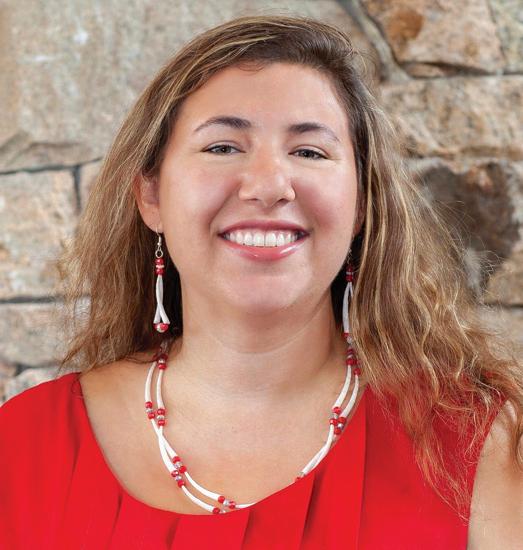
Saturday, December 9, 2:00 - 3:00pm
Join Rachel Beth Sayet, or Akitusut (She Who Reads) for a discussion of the rich traditions and celebrations of Indigenous people in New England and how these customs have continued. Sayet is a member of the Mohegan nation. Raised with the spirits of her ancestors, she grew up learning traditional stories and teachings and participating in tribal events. Sayet will discuss honoring the bounty of the harvests with multiple thanksgivings, and will share with us her knowledge about traditional foods and recipes.
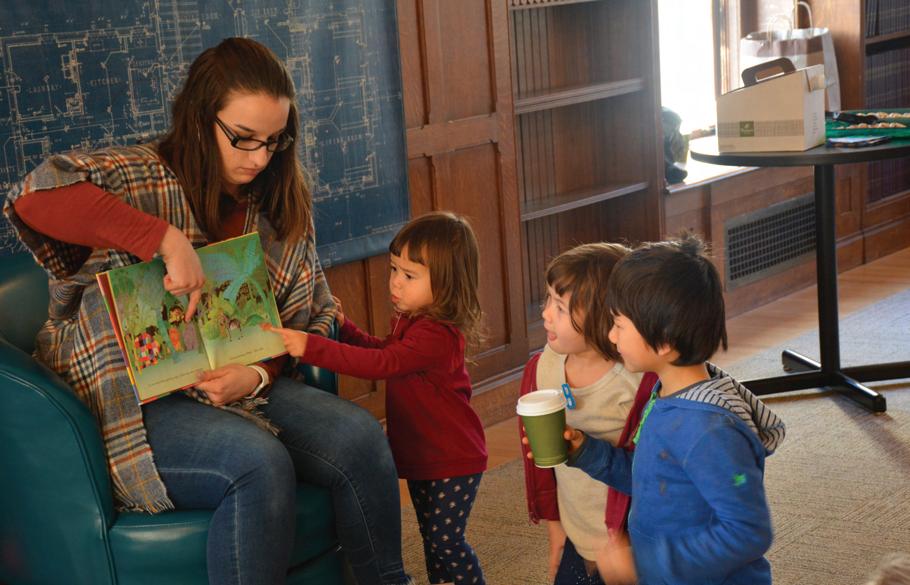
December 27 and 28, 2:00 - 4:00pm
Come in from the cold for a hot cup of cocoa, arts and crafts, and story time. On December 27, the story will be Where the Wild Things Are, a book by Connecticut author and illustrator Maurice Sendak, followed by Winter Cats, a book by Connecticut author Janet Lawler on December 28. This story time program is free with museum admission and designed for children under 10. During the month of December, families can also take home a free Family Activity Kit featuring historic content, images of objects from the museum collection, and hands-on activities to complete at home, all centered on holiday seasonings.
This program is made possible by Berkshire Bank.

Connecticut is a state of firsts, greats, and innovations. It’s woven into the fabric of its people, its places, and its cultures. For nearly 200 years, the Connecticut Museum of Culture and History (formerly Connecticut Historical Society) has captured, cataloged, and shared many of the stories and moments from across the state.
Today, the Connecticut Museum aims to connect you with so much more, not only through the collection and preservation of historical artifacts and objects, but through partnering with cultural communities to foster a deeper connection to our humanity. We work with inclusive audiences to promote historical and cultural perspectives as essential tools to connect with others, shape communities, and make informed decisions. The Connecticut Museum reaches people across the state by not only hosting visitors in-person in our galleries and at the Waterman Research Center, but through our traveling programs and exhibitions, with statewide educational initiatives, and through our digital collections available online accessible from anywhere on our website, and the Connecticut Digital Archive (CTDA). With this broadened focus, the Connecticut Museum has developed traveling exhibitions, programs, and collection resources to reach across the state to be an active and visible part of the community that reflects the composition of the entire state.
In the early 19th century, Connecticut was a leader in the women’s suffrage movement. “Enlightenment concepts, socialism, and the abolitionist movement helped U.S. suffragists universalize women’s rights long before Seneca Falls. They drew their inspiration not only from the American Revolution, but from the French and Haitian Revolutions, and later from the Mexican and Russian Revolutions. Many were immigrants who brought ideas from their homelands,” wrote Katherine M. Marino for the National Park Service. The Connecticut Museum has recently conducted exciting new research inspired by the words of Connecticut’s black reformer and activist Mary Townsend Seymour about the role that women of color played, often when faced with the prejudice of restrictive white women’s organizations, to advance women’s right to vote. The Connecticut Museum has created a traveling exhibition, “Votes For Women: The Work Must Be Done” for communities across the state to learn more about women’s suffrage movement in Connecticut.

Connecticut continues to lead in the adoption of LGBTQ+ rights by being the second state to ratify the Marriage Equality Act in 2008. The Connecticut Museum has explored the history of the LGBTQ+ community and movement in Connecticut from the 1600s to today, telling the stories of how people have moved away from hidden, solitary live to claiming visible, powerful, and valued individuals who are influencing and foster acceptance and change in our society. Explore the extensive timeline of events on our website, and schedule the traveling exhibition for your community center, library, school, or museum available for an 8-week loan period for a fee.
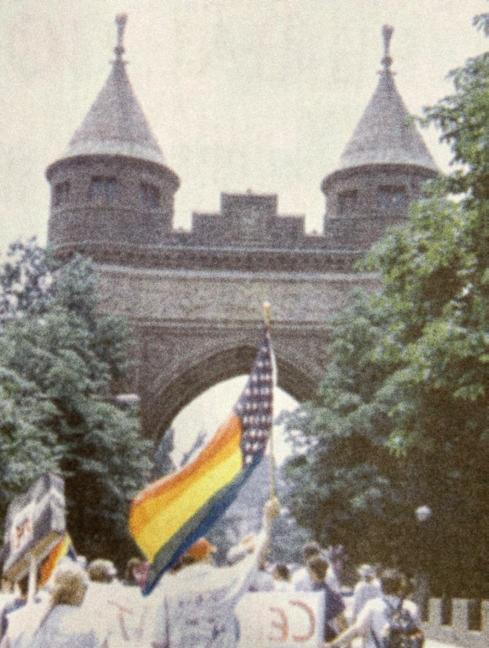
Our traveling adult outreach programs bring history and culture across the state in a fun, engaging way. These presentations range in topic from witchcraft trials in Connecticut, Black history in Connecticut, strange items from the Museum’s collection, to “Rosie the Riveter,” and much more. Programs are offered at libraries, senior centers, assisted living communities, and historical societies. Each of these programs are a great opportunity for the Connecticut Museum to extend the content from our exhibitions, highlight items in our collection, and share interesting Connecticut stories with others across the state in your neighborhood.
The Connecticut Museum is a recent recipient of a grant from the Institute of Museum and Library Services (IMLS) to create teaching aids for high school teachers throughout the state of Connecticut for the newly required Black and Latinos Studies courses. Educators at the Connecticut Museum have created 10 digital resource packs that contain primary source themes that align with the state’s curriculum standards. A sampling of themes include: “Because you Fought for It: Puerto Rican Activism in Connecticut,” “Connecticut Tobacco: Migration and Immigration in Connecticut,” “Power and the People: The Black Panther Movement in Connecticut,” and “Active Citizen: Civil Rights Workers in Connecticut,” among other topics. These teaching aids are being piloted in the 2023-24 school year. In addition, American history teachers outside of the area will have access to primary sources and content that illustrates the experiences of Black and Latino individuals in one of the country’s original colonies.
Immigrant experiences have been and continue to be essential to the fabric of the state. Today, the Connecticut Museum has partnered with The New-York Historical Society to offer free citizenship classes for green card holders preparing for the naturalization interview. The classes prepare green card holders to take the civics test portion of the United States Citizenship and Immigration Services (USCIS) naturalization interview. The next session runs November 11December 16, classes will be held online via Zoom. Registration is required.
The program is generously supported by the Henry Nias Foundation.
When people receive support to pass on important cultural traditions, there are positive outcomes for mental health, renewed senses of identity and well-being, and deepened connections within communities. Our Southern New England Apprenticeship Program (SNEAP) supports 10 months of intensive study between an experienced mentor and an apprentice, taking place in the communities where they live, work, and play. Twelve teams began their apprenticeship journey this September, with community members participating from seven out of eight Connecticut counties ranging from
Woodstock to Waterbury, New Milford to New Haven, East Granby to Higganum, and more.
Until June of 2024, each team will dive deep into cultural knowledge, teaching forms including Hmong dance, North Indian Kathak, Puerto Rican bomba, maritime lore, Finnish weaving, Puerto Rican vejigante maskmaking, South Indian Kuchipudi, East African inanga, stained glass restoration, and Afghan pottery, among others!
The Community History Project (CHP) at the Connecticut Museum is pleased to be the recipient of continuing funding from a $1 million federal grant from the U.S. Department of Education with the support of Congressman John Larson. The community driven history project has spent the last two years collecting and capturing stories of those most impacted

and historically marginalized communities during the pandemic. The Connecticut Museum will continue its work with Central Connecticut State University (CCSU) and broaden its focus to include other colleges, the Connecticut Digital Archive (CTDA), and diverse communities across the state. Community members are at the core of this research and data collection project, and the Connecticut Museum welcomes your suggestions to identify oral history participants, participate in an interview, conduct peer interviews, and donate objects to the collection.
From our collections to programs and educational opportunities, the Connecticut Museum touches all corners of the state with its resources. We invite you to participate in one (or many) of the opportunities to interact with us across the state.
“Votes for Women” banner printed in Hartford in 1915.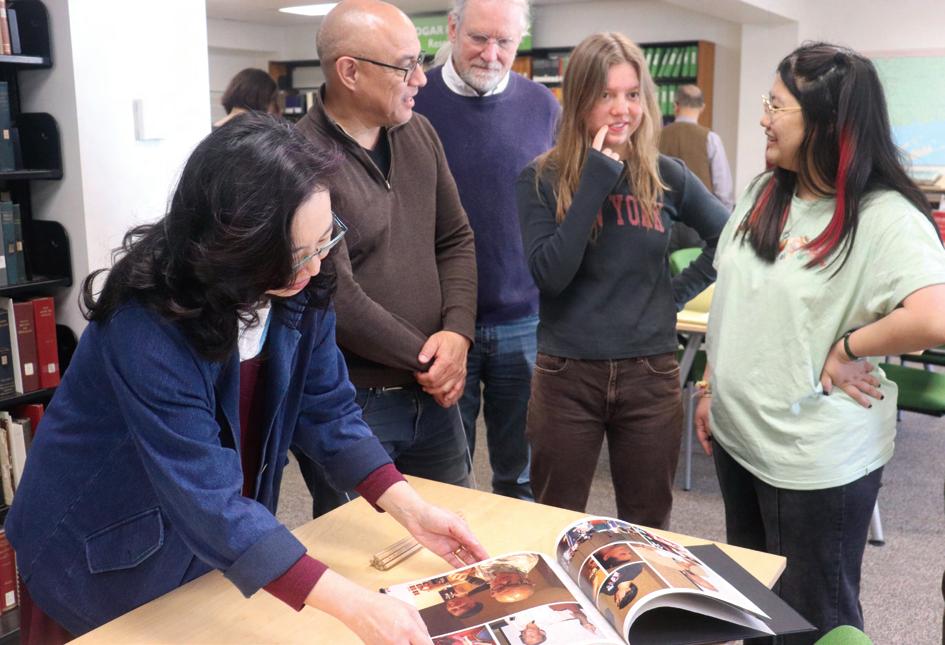
Dear Friend,
History and culture can open minds and hearts. At the Connecticut Museum of Culture and History, we believe that by cultivating a deep understanding of history and culture and their roles in the United States and the world—through reflection of the past, active engagement with the present, and innovation for the future—benefits us all today and tomorrow. Will you support our mission by making an annual gift today?
Through exhibitions, programs, and hands-on educational experiences, the Connecticut Museum fosters new ways to think about our state. This year, the Museum’s school programs explore civics, the American Revolution, the Native Peoples of Connecticut, and the role immigration and migration has played in our state. Our rotating exhibitions introduce visitors to the sports that bring communities together; and showcase the power of 300 years of print culture in shaping our ideals and values.
The Connecticut Museum preserves cultural communities’ history which can be explored through the artifacts in the collection: the religious sermons of English colonists, the simple design and construction of Enfield Shaker furniture, the Mardon Walker archives of her activism during the Civil Rights movement, and the audio recordings of Puerto Rican community voices from the 1990s.
Through this work, the Museum strives to actively listen to our community members to identify ways that the institution can be a resource to them today. One way is the Community History Project that has conducted in-person outreach into communities who have been left out of the historical record, we asked them to guide us as to what important stories should become part of the archive of tomorrow.
The Connecticut Museum is committed to cultural sustainability, working together with communities to support their efforts to maintain their own deeply rooted heritage— because the cultural vibrancy of our state relies on the efforts of people today.
You are part of the story of Connecticut, and you can help advance this important work through a gift today—for tomorrow, and years to come.
Sincerely,
Ilene Frank Deputy Executive Director / Chief Strategy OfficerThe Connecticut Museum of Culture and History has collected, preserved, and shared the history of the Constitution State for nearly 200 years. As a private nonprofit, 501(c)3 organization, we rely on the support of our many patrons, members, and supporters to make our work possible.
If you believe in the importance of preserving the past for the future, we encourage you to make a meaningful charitable contribution to the Connecticut Museum in support of the collections, education, cultural sustainability, exhibitions, and the Waterman Research Center. Your gift makes it possible for us to safeguard Connecticut’s treasures today and in the future.
There are many ways to contribute to the Connecticut Museum to create a legacy. While charitable donations by check or cash are the most common way to give, giving long-term appreciated securities may have beneficial tax benefits:
Stock and Appreciated Securities:
The end of the calendar year is a great time to take the tax advantages of making a charitable contribution. Most publicly traded securities may be donated to a public charity including the Connecticut Museum. If the security has been held for more than one year when the donation is made, the donor can claim the fair market value as an itemized deduction on their federal income tax return (if you itemize your deductions). The amount deducted in a single year can be up to 30% of the donor’s adjusted gross income (AGI).
Donor Advised Funds (DAF):
A DAF is a giving vehicle sponsored by a public charity. It allows donors to make an irrevocable charitable contribution to the public charity, be eligible to receive an immediate tax deduction, and then recommend grants from the fund to a variety of other charities over time. This approach can help streamline your giving, including tax recordkeeping, in one convenient location. Donors can contribute to a charity like the Connecticut Museum as frequently as they like and then recommend multiple grants to their favorite charities whenever it makes sense for them.
Over 70½? Consider a Qualified Charitable Distribution (QCD) from an IRA
If you are at least age 70½, have an IRA, and plan to donate to charity this year, another consideration may be to make a Qualified Charitable Distribution (QCD) from your IRA. This action can satisfy charitable goals and allows funds to be withdrawn from an IRA without any tax consequences. If you are over age 73, a QCD can also be used to satisfy your required minimum distribution (RMD)—up to $100,000 per individual.

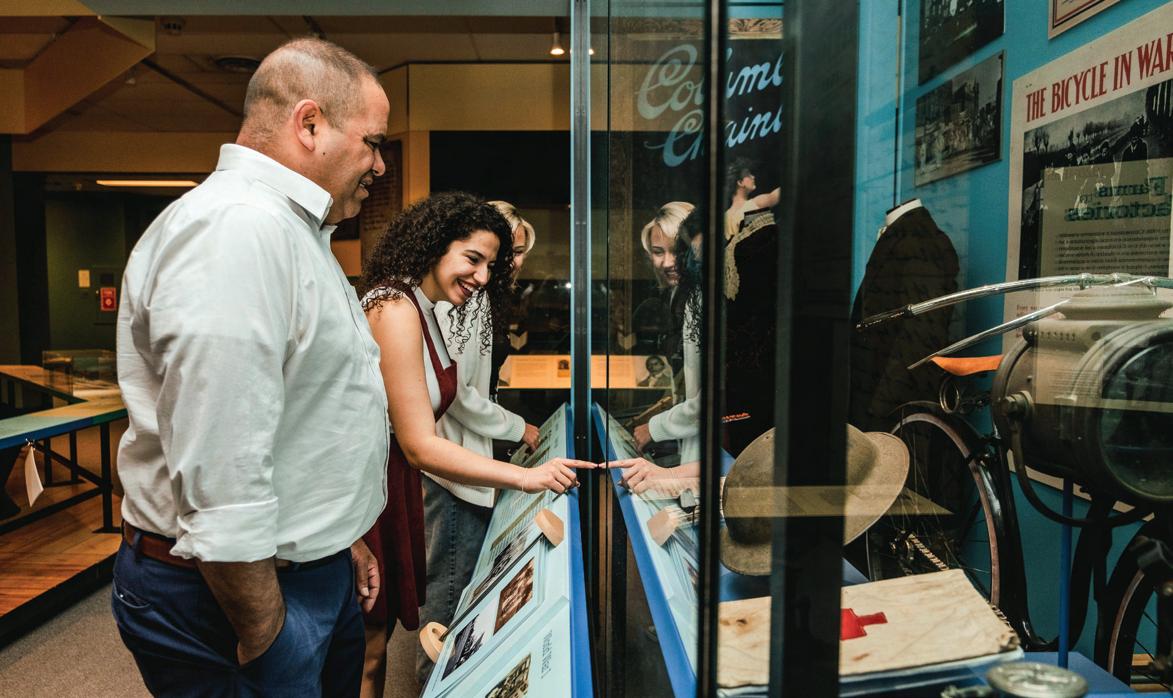
Create a Legacy: Remember the Connecticut Museum in Your Will
Thanks to many benevolent, forward-thinking individuals, the Connecticut Museum has been able to sustain, thrive, and grow for nearly 200 years. The Connecticut Museum’s strong foundation was built by people, like you, who remembered to include the
institution in their estate plans. If you would like to include the Connecticut Museum in your estate plans, you a make an outright gift, assign the Connecticut Museum as the beneficiary of a retirement plan, life insurance policy, or charitable trust. We will recognize all estate gifts (if you wish) in the John Trumbull Society.
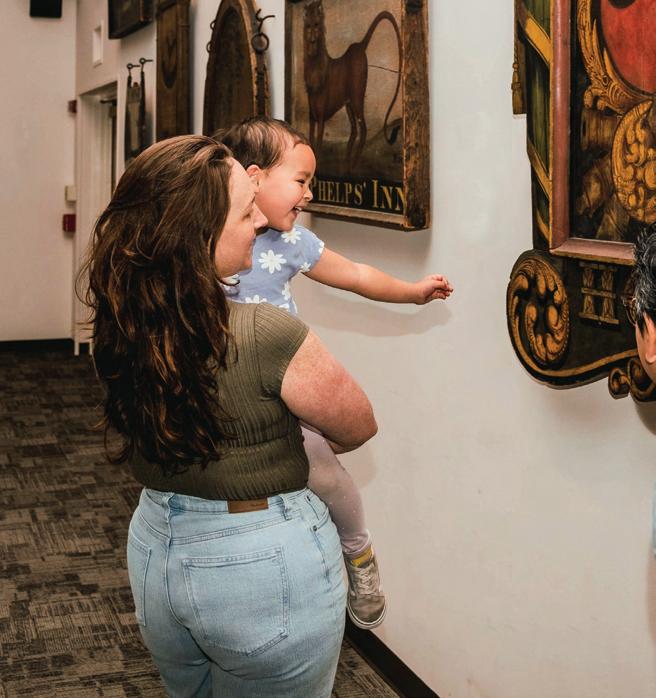
For more information on charitable giving, please contact :
Jamie O’Brien, Chief Advancement Officer jobrien@connecticutmuseum.org
(860) 969-6089 x 1
*The Connecticut Museum recommends that you consult with your financial advisor, legal counsel, or tax planner to fully understand tax benefits of charitable giving.
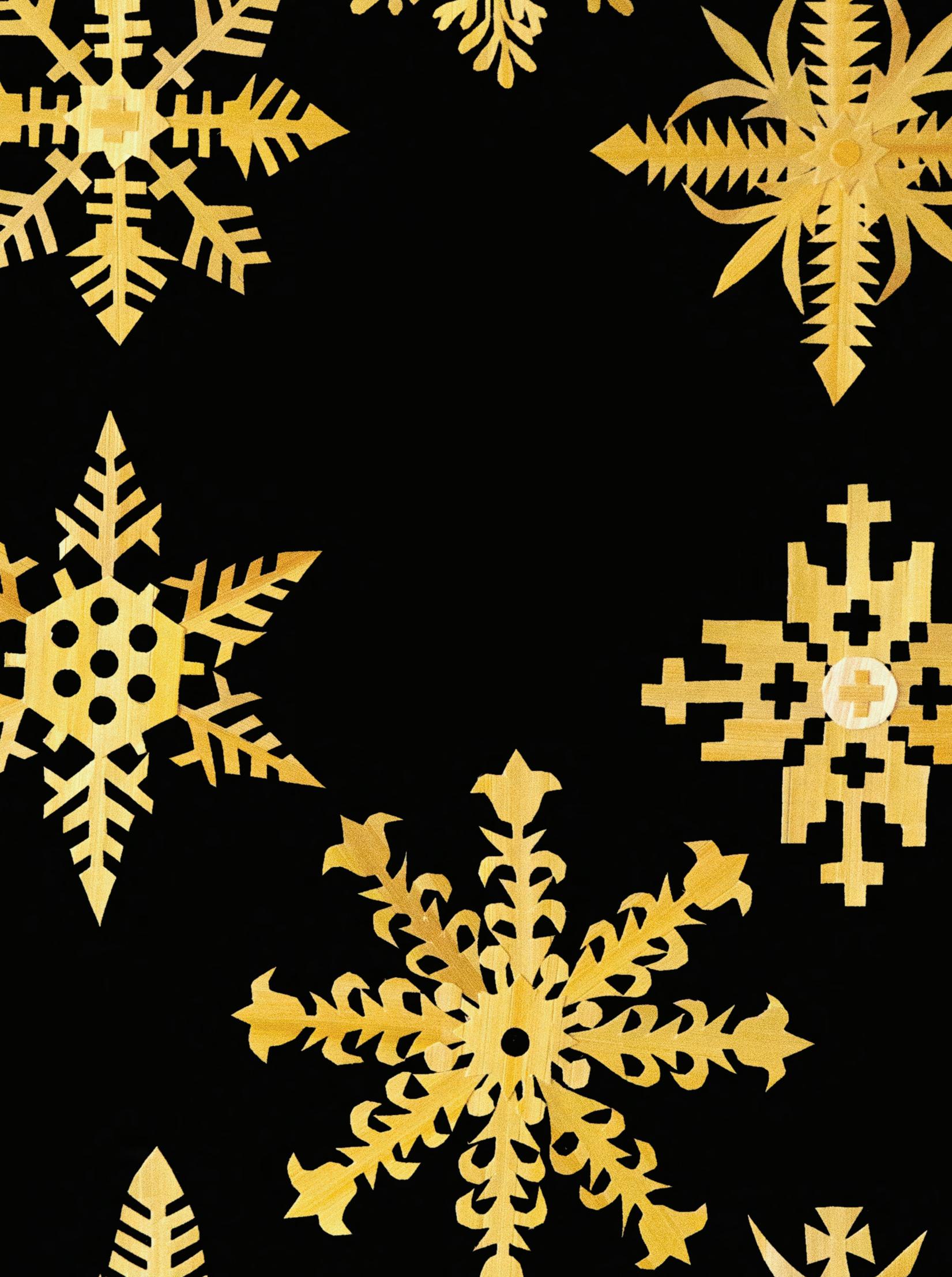
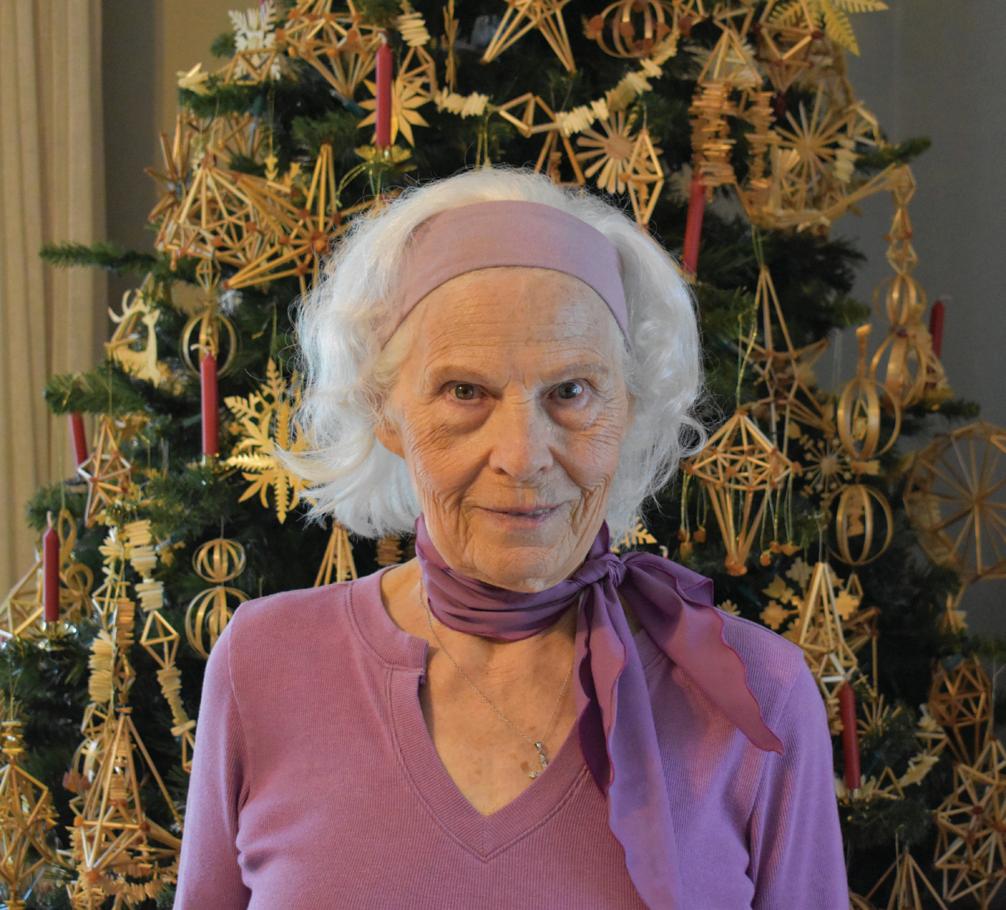
of Cultural Sustainability & Philitha Stemplys-Cowdrey, Southern New England Apprenticeship Program Manager
Aldona Saimininkas has spent over seventy years in Connecticut’s Lithuanian community as an artist, tradition bearer, and cultural ambassador, traveling internationally to exhibit her art and teach the cultural form she has specialized in—Lithuanian straw art (siaudu menas). The Connecticut Museum has been privileged to know Aldona for many years, and gaining insight into her life’s work helps us understand the depth of meaning held within the cultural heritage arts she has mastered. At her home on a rainy August afternoon, she shared her art and her archive, showing us how her culture, faith, family, and community are intertwined.
Aldona pointed out a portrait overlooking the room, “In here’s my mom. Look at that. That’s my brother and sisters. One brother, and all five sisters.” Aldona arrived in the United States with her family as refugees, part of a second wave of Lithuanian immigration after World War II. She fled Lithuania in 1944 at age 11 during the Soviet Union’s invasion and spent five years postwar living in Displaced Persons Camps in Allied-occupied Germany. In the camps, Lithuanians started schools, teaching academic subjects as well as keeping traditional cultural arts alive. Her family
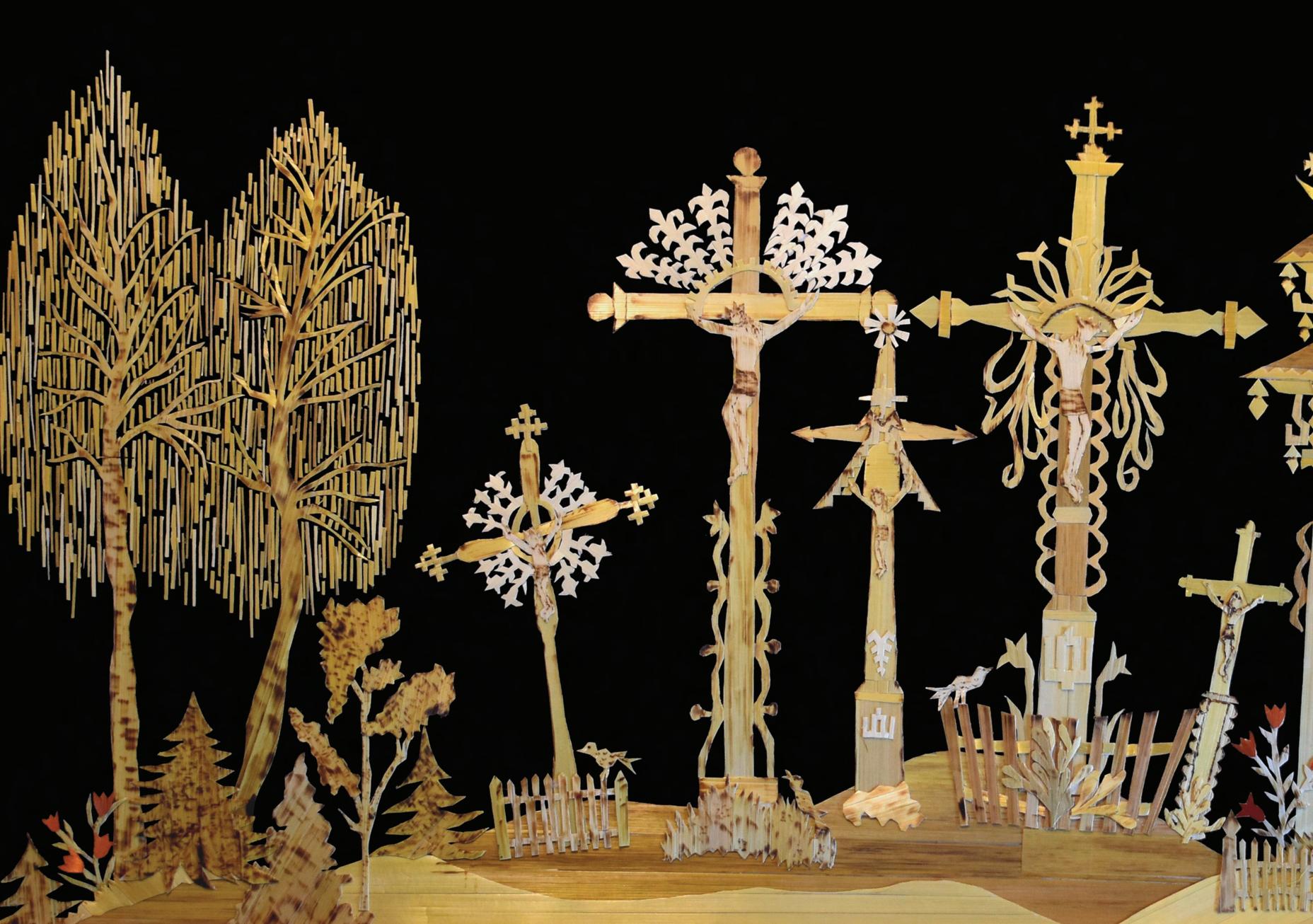
arrived in 1950 and was welcomed into the existing Connecticut Lithuanian community, already established by a first wave of immigrants who had arrived in the 1890s to escape Russian domination, settling into factory jobs in urban centers like Hartford and Waterbury. Aldona, only 17, had already determined to carry on her culture, religion, and heritage—something many Lithuanians feared would be erased through the Soviet occupation.
Aldona invited the Connecticut Museum into her workshop to show us her latest work, an intricate, two-dimensional scene using golden sheets of rye, which she has harvested, dried, and carefully ironed into shining straw ribbons. Her pictures often depict the country’s traditional agrarian society, for which rye was of utmost importance. Although a humble plant material, the straw gleams as it catches the light. In her siaudu menas, she includes religious and cultural icons and traditional patterns commonly found in ornamental carvings and textiles. With a woodburning tool, she etches even smaller details on the straw itself.
Her two most recent pieces depict Lithuania’s Hill of Crosses, a site of pilgrimage, remembrance, and resistance to religious and political oppression. Lately, her straw work fills her days, and the act of creating is a multilayered combination of action and remembrance. She’s driven, completing these two pieces on commission despite struggling with osteoarthritis in her fingers, “I finished in three weeks, and that’s the kind of picture you could work on for a year.” She points out a photograph that sits on her workroom desk, showing two figures standing in front of a hill bristling with intricately constructed crosses ranging from enormous to tiny. “This is the original Hill of Crosses. It’s so huge; it’s so massive. And that’s my husband and myself, when we went during the Communist times.…nobody talked about it, we just had to go there. And then, we spent the whole day.” Aldona reflects, “It kept all of us very spiritual when we went to Lithuania, we really watched ourselves. And it’s deep within me.”
She’s created versions of the Hill of Crosses before, but each of her pieces is subtly different, even when she is creating on the same theme. Re-creation,
resistance, and remembrance is part of Lithuania’s Hill of Crosses, too. During the occupation, she explains, “when the Russians overnight destroyed the crosses, people went the following day, and already had built crosses, in memory of their son that had died, or their daughter, or the ones that were taken to Siberia.” Some of Aldona’s most personally meaningful versions of this scene have been for family, including family she has lost, and she remembers each piece’s distinguishing features.
“It kept all of us very spiritual when we went to Lithuania, we really watched ourselves. And it’s deep within me.”
Another form of straw art Aldona makes are ornaments (siaudiniukai), in both two- and three-dimensional forms. In one, the ironed straw is cut and layered into stylized shapes like stars and crosses. In her three-dimensional ornaments, she cuts whole rye straws carefully into varying lengths, then draws thread through the hollow tubes to create geometric shapes. This technique is also used when she creates more elaborate mobiles of straw called sodai, or gardens. In her dining room, a Christmas tree stays up year-round, covered in straw ornaments in the shapes of stars, snowflakes, and hanging gardens.
Aldona’s siaudiniukai can be found on sale during the annual Saint Casimir’s Fair at Holy Trinity Roman Catholic Church in Hartford, when the
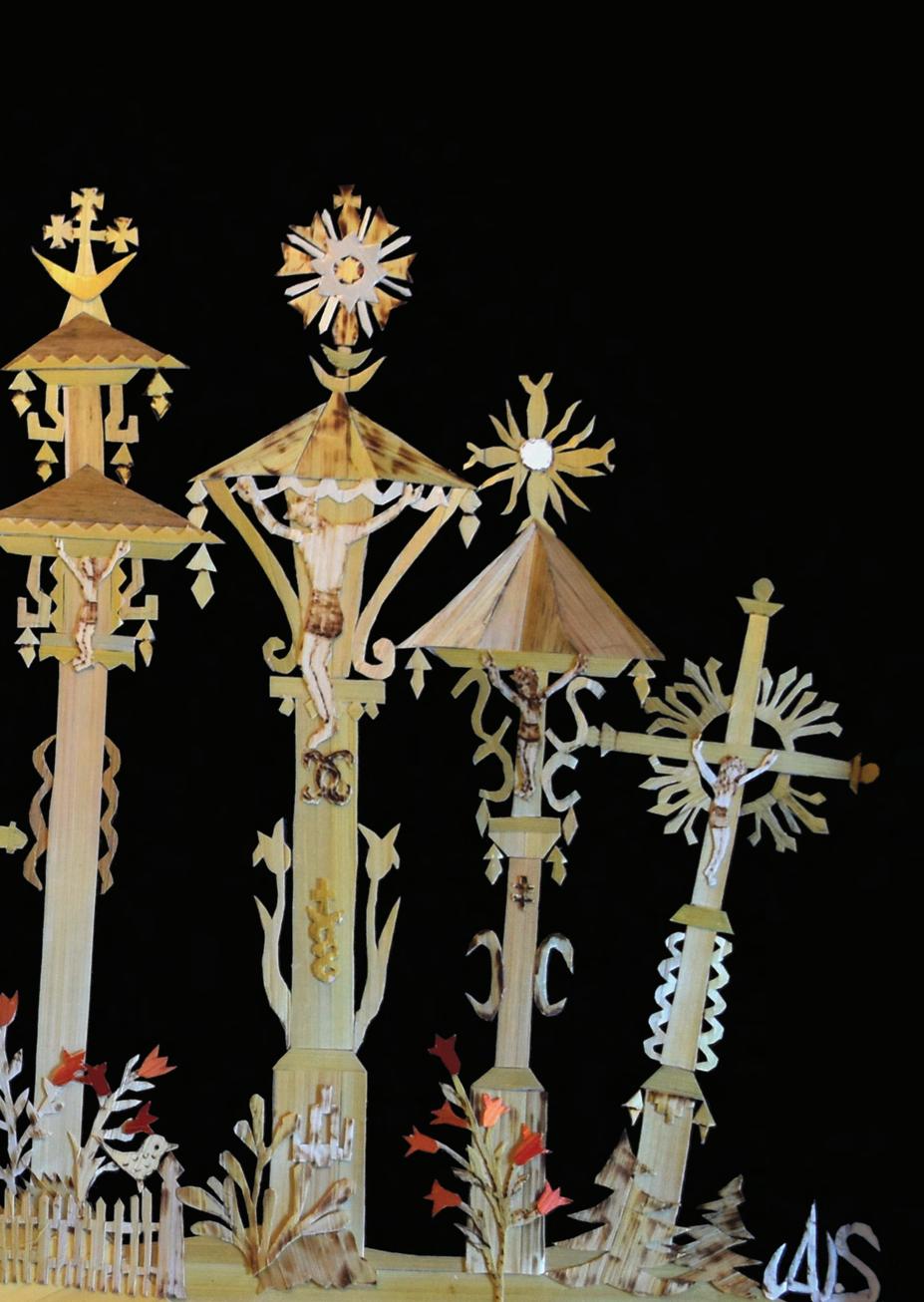
congregation gathers with Lithuanian artists, vendors, family, and friends to celebrate community, eat delicious food, and raise money. Aldona is a regular at this event and others in the region, where she chats enthusiastically with friends in Lithuanian and English. A significant part of Lithuanian community life has been interwoven with their churches. Holy Trinity was founded in 1900 by Lithuanian immigrants, and still holds services in Lithuanian today. Throughout the United States and Canada, Lithuanian communities have also created heritage camps, schools, and a scouting organization to preserve and pass on their rich cultural and religious traditions.
Since the 1960s, Aldona has been an integral part within these organizations, and teaching the art form to her community has been central to her experience. “I was never at home, always going. Traveling from one city to another, from one state to another… Do you see how many groups I taught?” she asks us as she turns the pages of her photo album, full of pictures of children’s classes, hundreds of students of straw art who she has taught in workshops, churches, heritage camps, and Lithuanian language Saturday schools throughout the United States and Canada. “How did I do it all, I wonder?” Each photograph, each piece of artwork, each newspaper article, each bit of ephemera she has saved is a touchpoint that spins off into stories, genealogies, feelings, political histories, symbolism, languages—a complex nexus of community connections. To understand why Aldona’s community values her work so highly, and why it means so much, requires time to listen, and learning how to do what she does requires more than just technical skill. Her community ties extend far outside of Connecticut. Aldona has created straw art for family, friends, collectors, commissions, museums, and churches across North America. She was also asked to create an official gift to represent the Lithuanian American community in commemoration of the American celebration of the 600th anniversary of Lithuanian Christianity in 1987. In a piece gifted to Pope John Paul II, now in the Vatican’s art collection, she featured a young girl dressed in a traditional Lithuanian costume, kneeling next to a roadside cross with her arms outstretched in chains. This
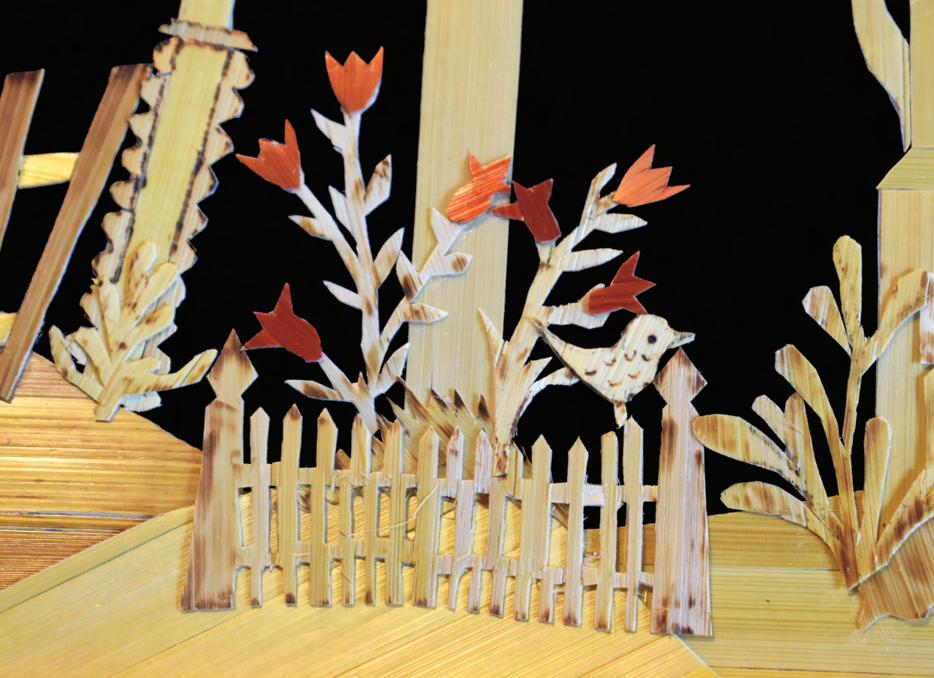
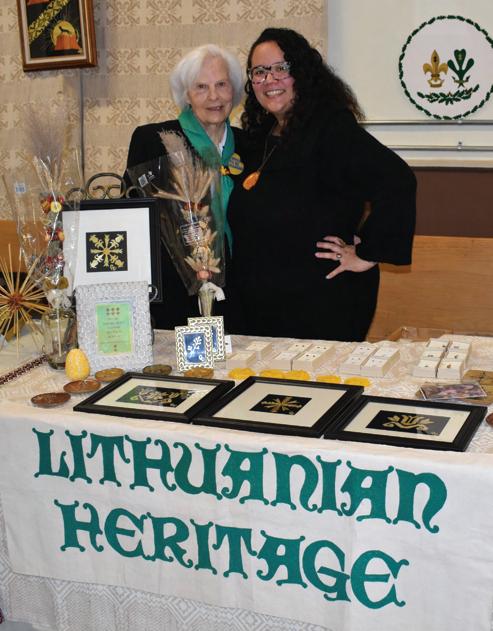

picture represented the hope Lithuanians kept during the Russian occupation (which ended in 1991), that one day the suppression of their religion, language, literature, and heritage in their homeland would end.
Now at ninety, Aldona continues to teach and pass on her wealth of cultural knowledge and skills to others. In 2018 and 2021, she became a mentor artist in the Southern New England Apprenticeship Program, working one-on-one with her apprentice, Philitha Stemplys-Cowdrey, to teach the process of creating rye straw pictures alongside the multilayered, complex meanings of history, present, and future that they invoke. Through the apprenticeship, she also publicly passed on her role of teaching traditional Lithuanian arts within the community to her apprentice, who continues teaching today.
The Connecticut Museum celebrates 25 years of the Southern New England Apprenticeship Program this year. It is together with artists like Aldona that the program finds its heart, providing support to allow culture-bearers to pass on their wisdom to others. “This is my last Hill of Crosses, that I know. I’m not going to do any more,” Aldona affirms—her fingers need a break from this incredibly intricate work. But she has no intention of stopping to make siaudu menas: “I don’t give up, not yet!” Only last year, Aldona was invited by the West Hartford senior center to teach classes on straw ornaments. She often expresses that her continued teaching and creation of straw art is her life’s purpose and what keeps her healthy, serving as her therapy from the ailments and experiences of loss that she has faced throughout her lifetime. Surrounded by images of her family as she works on her art, she takes comfort and joy in the process. As she pages through her albums, full of friends, family, and community members, she points out those who have passed on. She remarks, “All of them are gone. It’s kind of sad. But when I look at these and read about these, I’m alive.” She smiles. “I’m alive and I’m happy.”
Connecticut is the birthplace of comic books, copyright law, Noah Webster, and the recipe for pumpkin pie. It printed the first fugitive slave narrative, sold millions of dollars of books by subscription, and inspired children’s sections in libraries nationwide. From the 1700s to today, Connecticut has been compiling its bookshelf, one sermon, ledger, map, schoolbook, law, psalm, newspaper, and book at a time. Connecticut’s Bookshelf explores how these documents were made, shared, and received, and asks you to consider: What belongs on the shelf? And who gets to decide?
Drawing from the Connecticut Museum’s vast printed collection, this exhibition takes a broad and playful look at how the printed word has shaped our state’s identity. This exhibition will appeal to book aficionados, comic nerds, history lovers, and anyone looking to spend some moments browsing through familiar and unfamiliar stories. Just like you would wander through your local bookstore, choose your own path through Connecticut’s Bookshelf as it is organized into thematic sections. Which do you prefer, House and Home, Music, Autobiography, or something else?
Discover American Cookery by Amelia Simmons, the first cookbook by an American to be published in the United States. While little is known about the author, American Cookery was
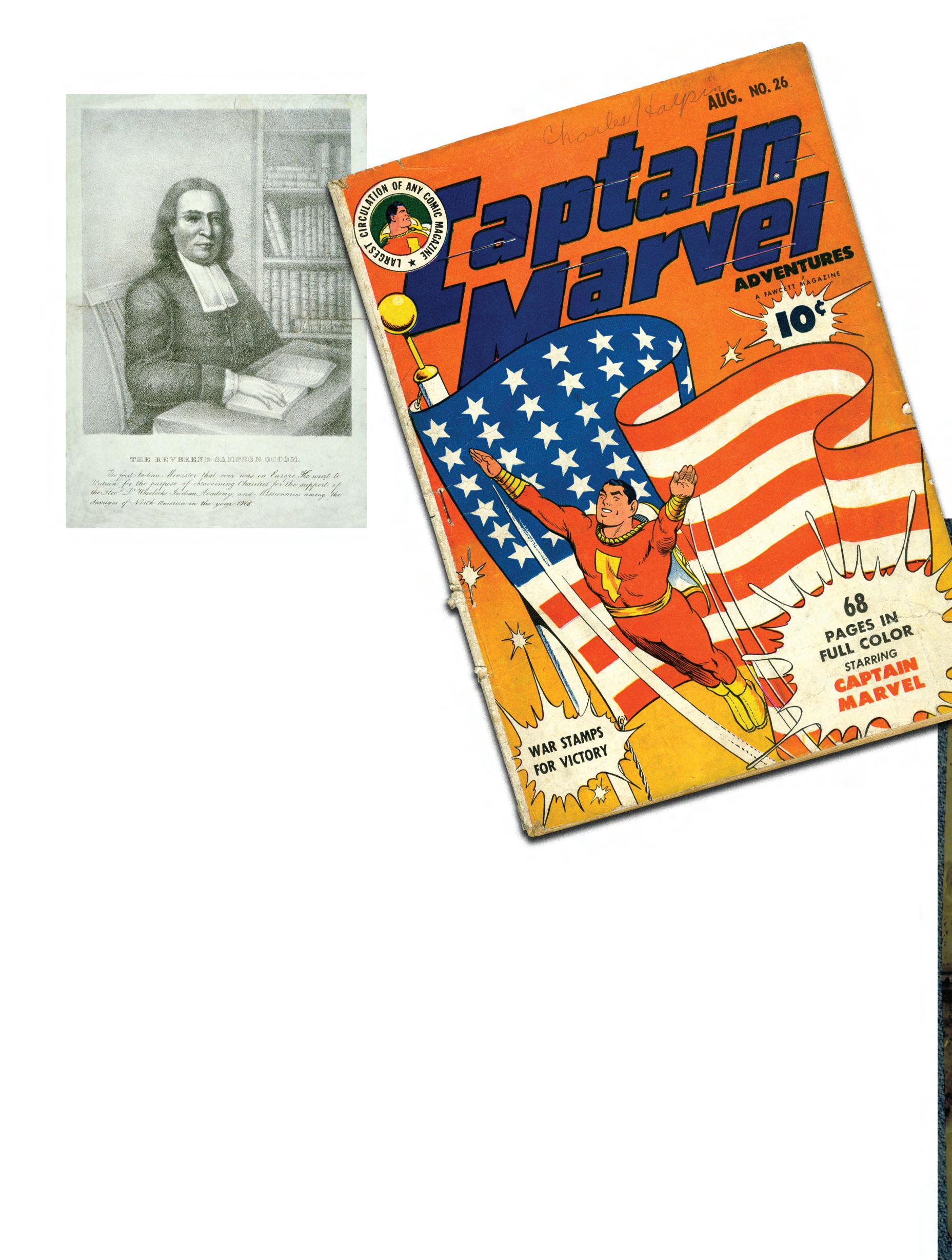
published in 1796 by Hartford printers Hudson & Goodwin. Simmons combined recipes for British foods with recipes for new American dishes and ingredients. The opening sentence of Simmons’ preface states that this cookbook was for American women to provide them with the education to cook the new nation’s dishes and thereby to embrace a new national identity. The book was a bestseller for nearly 30 years.
Explore the writings of Samson Occom, a member of the Mohegan Tribe, was one of the first ordained Native American Christian ministers. More widely known for his Sermon at the Execution of Moses Paul*, which is considered one of the earliest texts published by a Native American author, Occom is also considered the first published Native American composer. In 1774, A Choice Collection of Hymns and Spiritual Songs; Intended for the Edification of Sincere Christians, of All Denominations was published in New London and included a few hymn texts written by Occom.
You may even tap into a little bit of nostalgia with Tomie dePaola, a noted author and illustrator of children’s literature. DePaola was born in Meriden,
Connecticut in 1934 to a family of Italian and Irish heritage, and his writing career spanned over 50 years during which he worked on more than 270 books. He is best known for the 1975 book Strega Nona* and its various sequels. Later in his career dePaola published a series of autobiographical children’s books, 26 Fairmont Avenue. Through images of an early draft and sketches of illustrations that are in this book, you can see how we craft the story of ourselves.
Don’t just take our word on this subject, the exhibition will also feature several audio clips from writers and readers who provided their thoughts on literary history from many years ago up to recent publications.
Connecticut’s Bookshelf is open through September 8, 2024.
The exhibition is generously sponsored by RMC Investment Advisors, Stanley Black & Decker, Marketing Solutions Unlimited, LLC, Harvey & Lewis Opticians, and an anonymous donor.
*Please note, Sermon at the Execution of Moses Paul and Strega Nona will not on view as part of the exhibition.
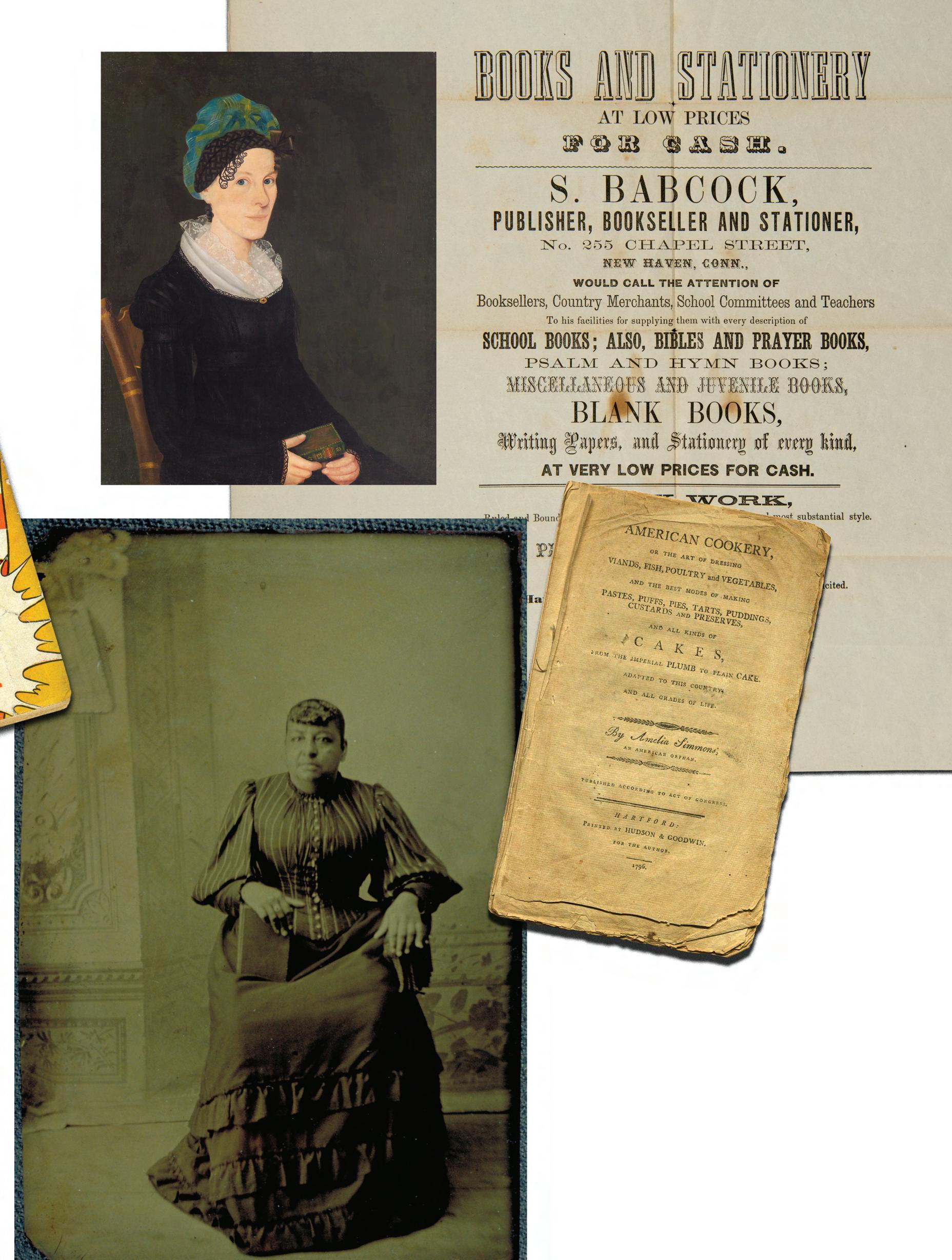
Reverend Sampson Occom, lithograph, about 1835. Connecticut Museum collection, gift of Mrs. Dea. Jabez Huntington, 1843.6.0. Captain Marvel Adventures, Vol 5, #26, published in August 1943 by Fawcett Publications, Inc., Greenwich, CT. Connecticut Museum collection, The Newman S. Hungerford Museum Fund. Studio portrait of a woman with a book, Norwich, CT, 1870–1890. Connecticut Museum collection, 1981.136.8.
Broadside, “Books and Stationery at Low Prices for Cash,” published by Sidney Babcock, May 1862. Connecticut Museum collection, gift of Anonymous, 2022.58.0. Portrait of Sophia Wells Abernathy, attributed to Dr. Samuel Broadbent, about 1820. Connecticut Museum collection, gift of Mrs. Robert C. Buell, 1962.57.2. American Cookery by Amelia Simmons, published by Hudson & Goodwin, Hartford, CT, 1796. Connecticut Museum collection, 1796 S592a.
After nearly 200 years, the Connecticut Historical Society rebranded to a new name and visual identity: Connecticut Museum of Culture and History. The new name reflects the organization’s mission to explore the rich culture and history of Connecticut, while sharing its impact on the nation and the world today. The Connecticut Museum hosted a launch event for the public and media to celebrate this milestone on June 22, 2023.

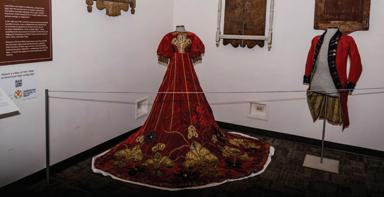
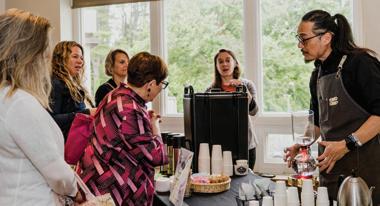
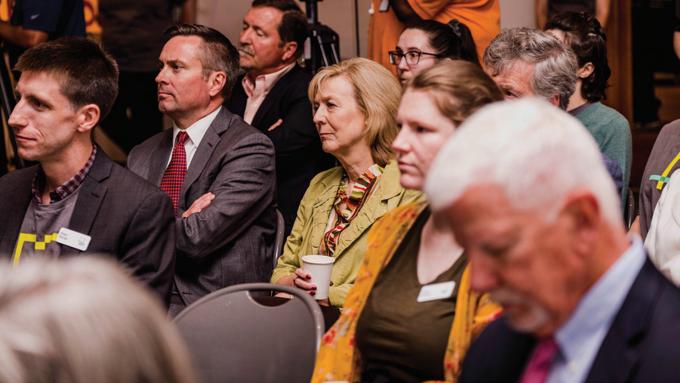
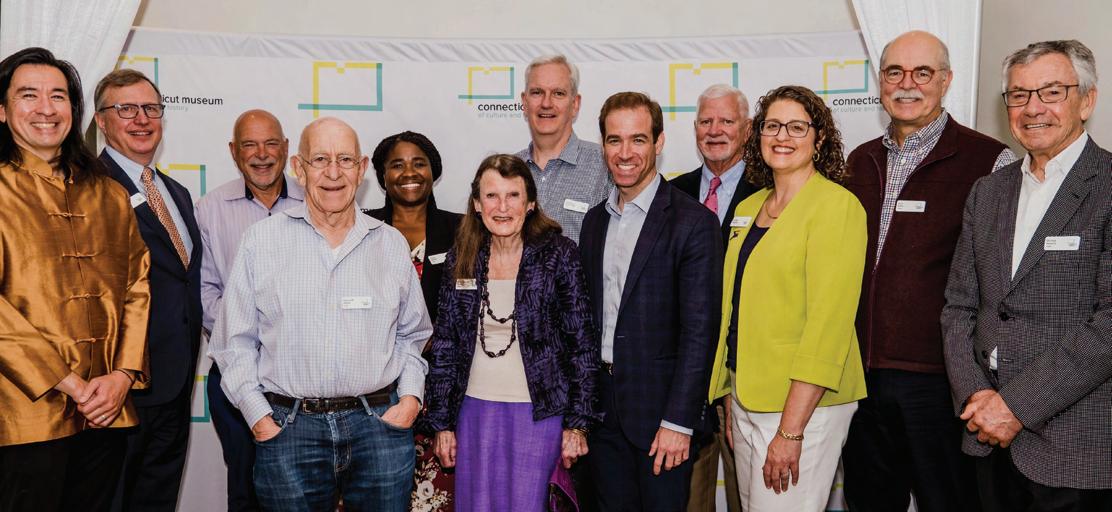

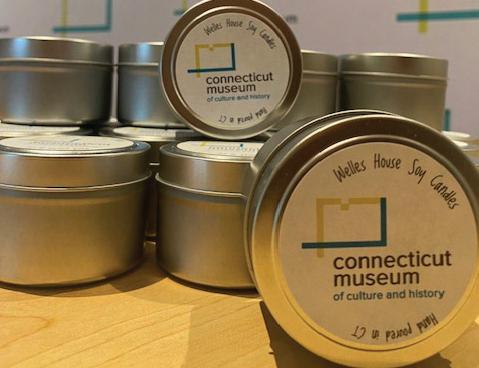


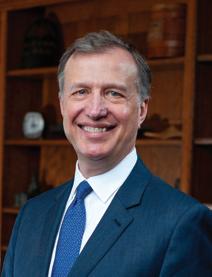
In this digital information age, where global resources are at our fingertips and entertainment is often just a click away, the significance of visiting a museum today might seem secondary to some. During this holiday season, I encourage you to consider revisiting the Connecticut Museum when you are planning things to do with your family and friends. With two newly opened exhibitions and an exciting array of ongoing programs for both you and your children, there is much to make your spirits bright. Museums were once called “cabinets of curiosities,” offering deep collections of objects and artifacts to stimulate the senses. Museums today offer tangible connections to culture, history, and creativity. These living repositories of our collective heritage offer a unique portal through which we can step into the past. They are invigorating spaces where visitors are exposed to a diverse range of perspectives and points of view.
In a world inundated with superficial content, museums offer an opportunity to pause, and offer a reprieve for genuine contemplation and learning. Tangible and authentic objects organized in exhibitions tell stories about our past so we can make more informed decisions about the present and the future. Instead of thinking about museums as a noun, a building, and a place to go, think about museums as a verb, where there are lively conversations and interactions between you and the past.
When working well, museums are places to discover something new about a subject that we did not know before. When working very well, museums can be places where we learn something new about ourselves and visitors leave a bit differently from the way they were when they arrived.
With any luck, with a visit to the Connecticut Museum, you will leave having learned something new about our history, culture, and more broadly the world. You may even learn something new about one another and about yourself that might bridge new understandings in the future.
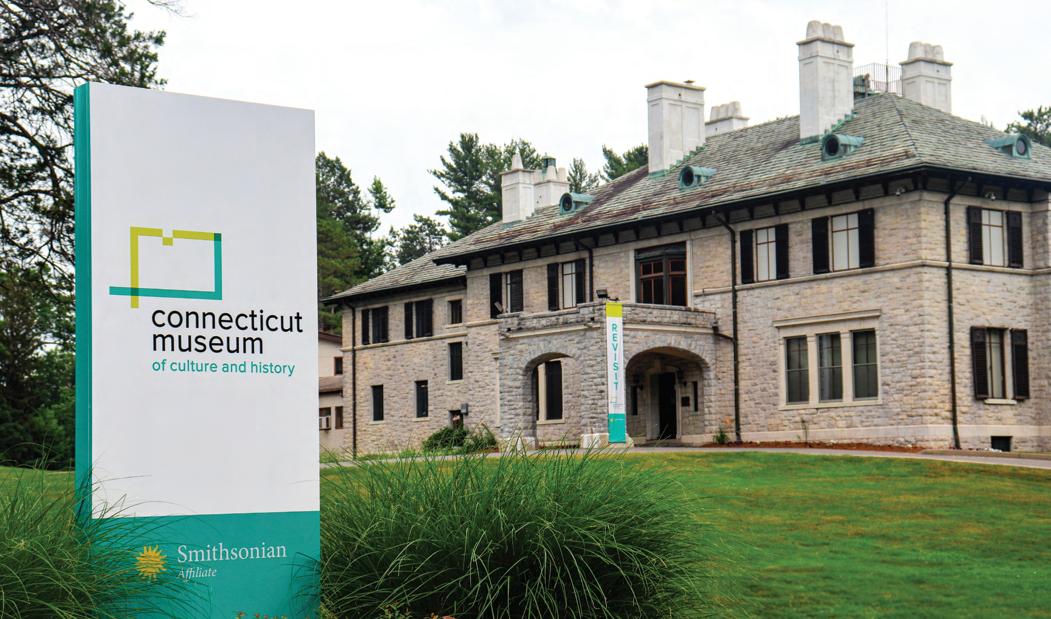
OFFICERS
MICHAEL A. CANTOR
Chair
SYLVIA BUSH KELLY
President
FIONA VERNAL
First Vice President
HENRY M. ZACHS
Second Vice President
BICHOP J. NAWROT
Investment Committee Chair and Vice President
DAVID M. KLEIN
Treasurer
PORTIA CORBETT
Secretary
MEMBERS
ALAN ALEIA
HARRY ARORA
ROBERT J. BAZYK
SARA S. CHAMPION
TAMMY RUSH EXUM
GEORGE C. JEPSEN
BARBARA KIEFER
DIXON C. MALLORY
JAY MALCYNSKY
DAVID MCCARY
ANDREW MCDONALD
DENISE W. MERRILL
JOANN H. PRICE
JASON ROJAS
CAROLINE SIMMONS
MANISHA SINHA
CORBIN B. WALBURGER
JAMES C. WILLIAMS
HONORARY TRUSTEES
SUSAN B. ALLER
DAVID W. DANGREMOND
MARY JEANNE JONES
LAWRENCE V. MOWELL, JR.
JUDITH S. WAWRO
One Elizabeth Street
Hartford, CT 06105
Museum Hours:
Tuesday - Friday, 12:00 - 5:00pm
Thursday, 12:00 - 8:00pm
Saturday, 9:00am - 5:00pm
Sunday, 12:00 - 5:00pm connecticutmuseum.org facebook.com/cthistoricalsociety twitter.com/thectmuseum instagram.com/thectmuseum
COVER: Aerial view of Farmington River and town, Pleasant Valley, Connecticut, about 1915. Connecticut Museum collection, Gift of Margaret G. Giles, 2015.87.1479
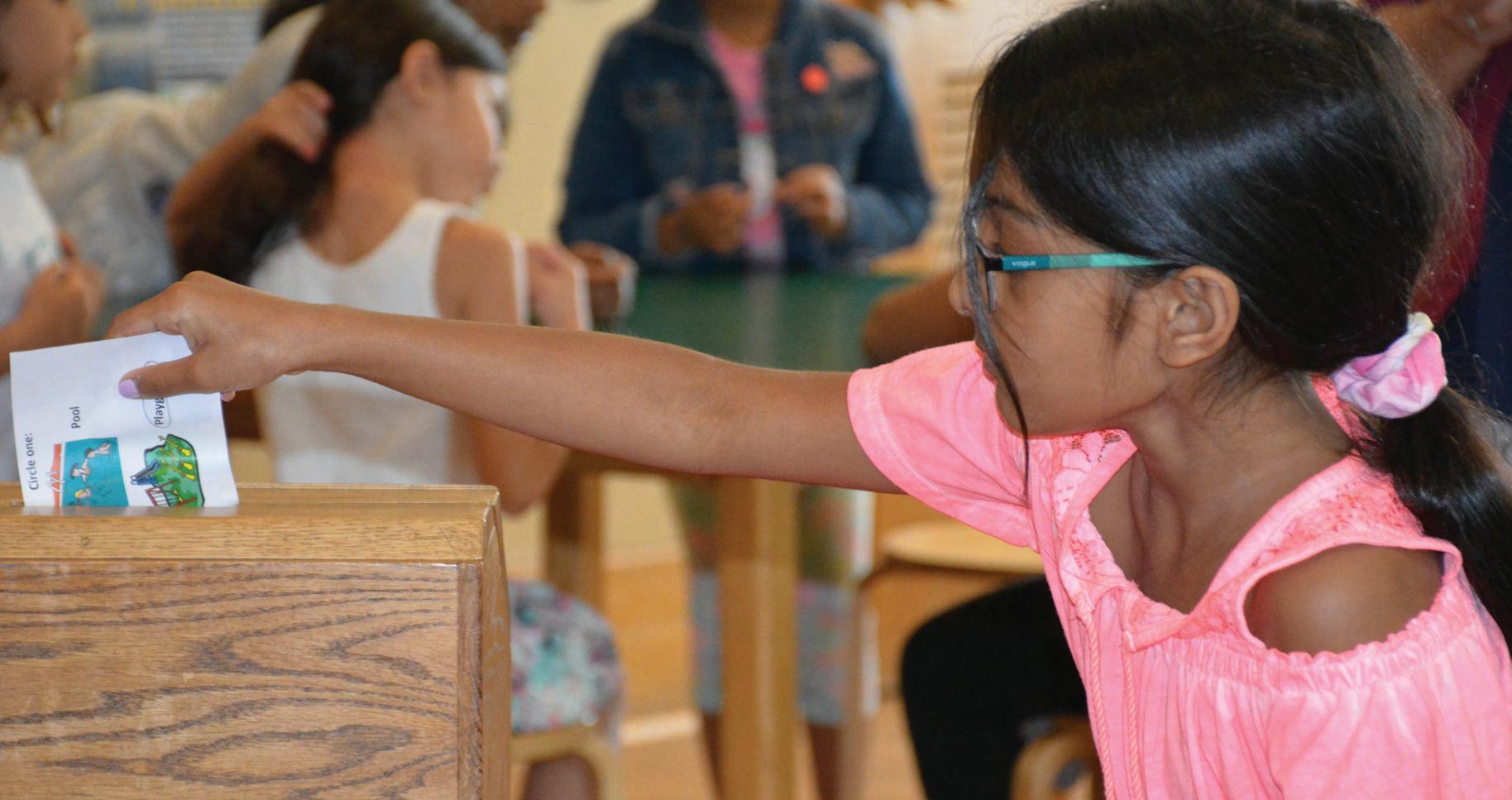
Through a $1 million grant from the U.S. Department of Education the Civics Education for Connecticut Students Project will reduce barriers and increase access to civics programs at local museums for elementary school students across Connecticut.
Participating schools will receive fee reductions and stipends to offset the cost of bus transportation to attend civics programs designed for students in grades K-5. Participating museums include the Connecticut Museum of Culture and History, the Connecticut Democracy Center at Connecticut’s Old State House, the Fairfield Museum & History Center, the Mark Twain House and Museum, and the Mystic Seaport Museum. These civics educational programs will be available for a reduced cost of $2/student.
The grant will also support a museum-school partnership facilitated by the Connecticut Council for the Social Studies. This partnership will match museums with classroom teachers to co-develop civics content for teachers to use in their classroom as well as customized museum field trips. Additionally, funds will support the Connecticut Democracy Center’s Connecticut’s Kid Governor® program by providing bus support for the two-day election bus rally across the state as well as support for Inauguration Day events. These events serve 5th grade students statewide.
For more information, please contact:
Peter MoranProject Director, Civics Education for Connecticut Students pmoran@connecticutmuseum.org
Contributors: Marissa Baum / Rebecca Gavin / Katie Heidsiek / Ilene Frank / Rob Kret / Jamie O’Brien / Andrea Rapacz / Kate Schramm / Philitha Stemplys-Cowdrey / Andy West